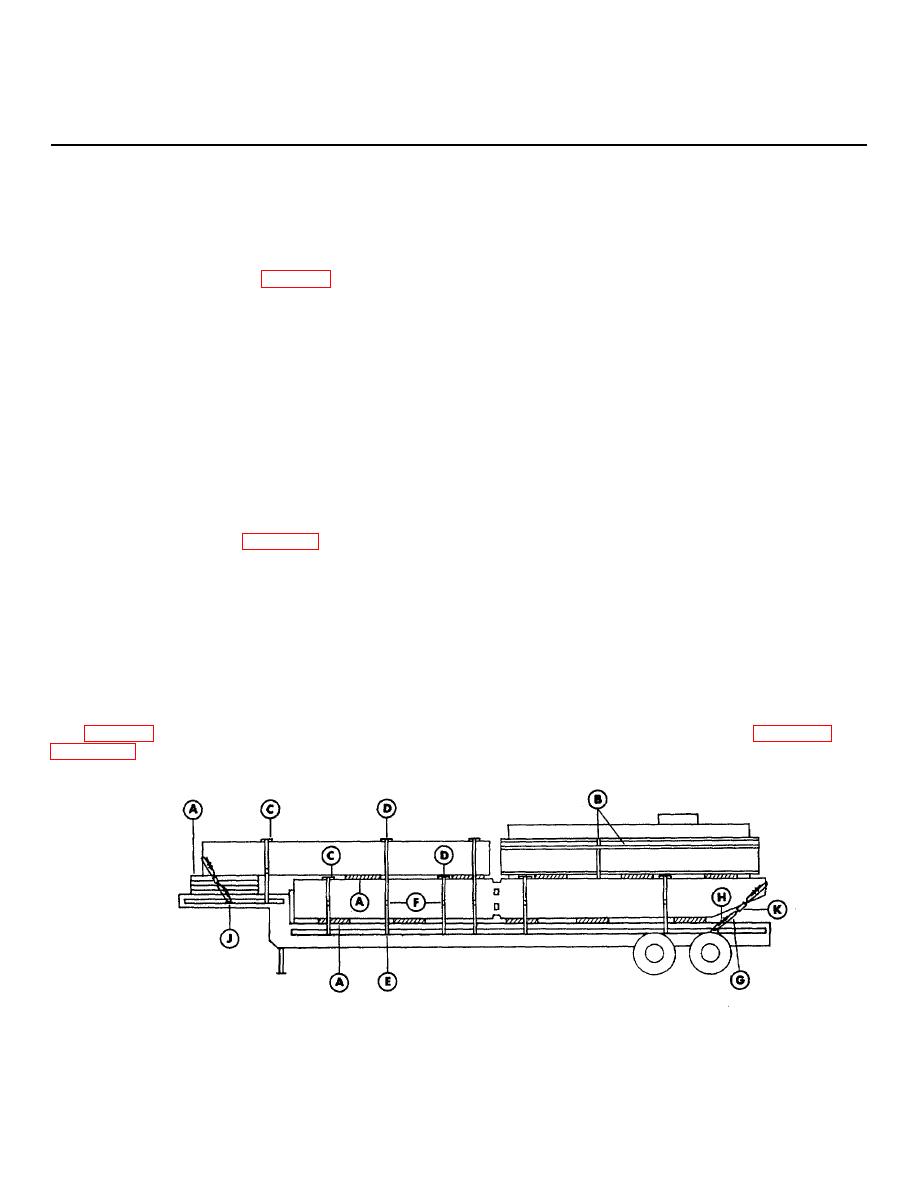 |
|||
|
|
|||
|
Page Title:
Chapter 5. HIGHWAY TRANSPORTABILITY GUIDANCE |
|
||
| ||||||||||
|
|
 TM 55-1930-218-14
CHAPTER 5
HIGHWAY TRANSPORTABILITY GUIDANCE
Section I. GENERAL
5-1. Scope
This chapter provides transportability guidance for highway movement of the disassembled LACV-30. It covers
significant technical and physical characteristics and prescribes the material and guidance required to prepare, load, and
tie down the components.
5-2. Safety
Safety precautions are listed in chapter 3.
5-3. Preparation
The LACV-30 must be disassembled for transport by semitrailer. Remove and crate the propellers in prop boxes.
Remove the radar scanner unit, supports and mast. After removal of the radar mast, particular care must be taken to
seal the opening in the top of the control cabin.
NOTE
For highway shipment, the power modules are left attached to their respective rnidcraft buoyancy boxes.
Section II. TRANSPORT BY SEMITRAILERS
5-4. General
a. The LACV-30 components, loaded on semitrailers, can be transported over highways within CONUS with
restrictions. If the dimensional capacity of the semitrailers is properly utilized, some loads will exceed the 96-inch-width
and 162-inch-height restrictions of some states. When loads exceed these limits, special permits, in accordance with AR
55-162, are required. In some cases, circuitous routing may also be required. Legal limitations in oversea areas are
identified in Limits of Motor Vehicle Sizes and Weights, International Road Federation, 1023 Washington Building, WASH
DC 20005.
b. The loads illustrated in figures 5-1 through S-7 are based on the use of low-bed semitrailers with 30-foot-long
loading areas and flatbed semitrailers with 40-foot-long decks. The military M270A1, as well as a number of commercial
semitrailers, may be used to carry the larger components. Seven semitrailers (three lowbed and four flatbed) are
required to transport the disassembled LACV-30 components, including one flatbed semitrailer to transport a MILVAN
containing the anchor line box, rudders, life rafts, surf fences, tools, spare parts, POL products, and miscellaneous loose
items.
5-5. Loading
a. The components of the LACV-30 can be placed in the tiedown position on semitrailers by either a crane or a forklift
equipped with fork extensions. The crane or forklift must have a capacity of at least 4 tons.
b. Position 4-inch-thick styrofoam cushioning on the semitrailer decks so as to protect the fragile components. This
cushioning is also required between components when they are stacked.
c. Table 5-1 is the bill of materials required for blocking and tiedown of components and modules, and tables 5-2
Figure 5-1. Blocking and tiedown of LACV-30 aft center buoyancy box (air management system) with center midcraft
buoyancy box, vehicle ramps, and port and starboard aft side decks on low-bed semitrailer.
5-1
|
|
Privacy Statement - Press Release - Copyright Information. - Contact Us |